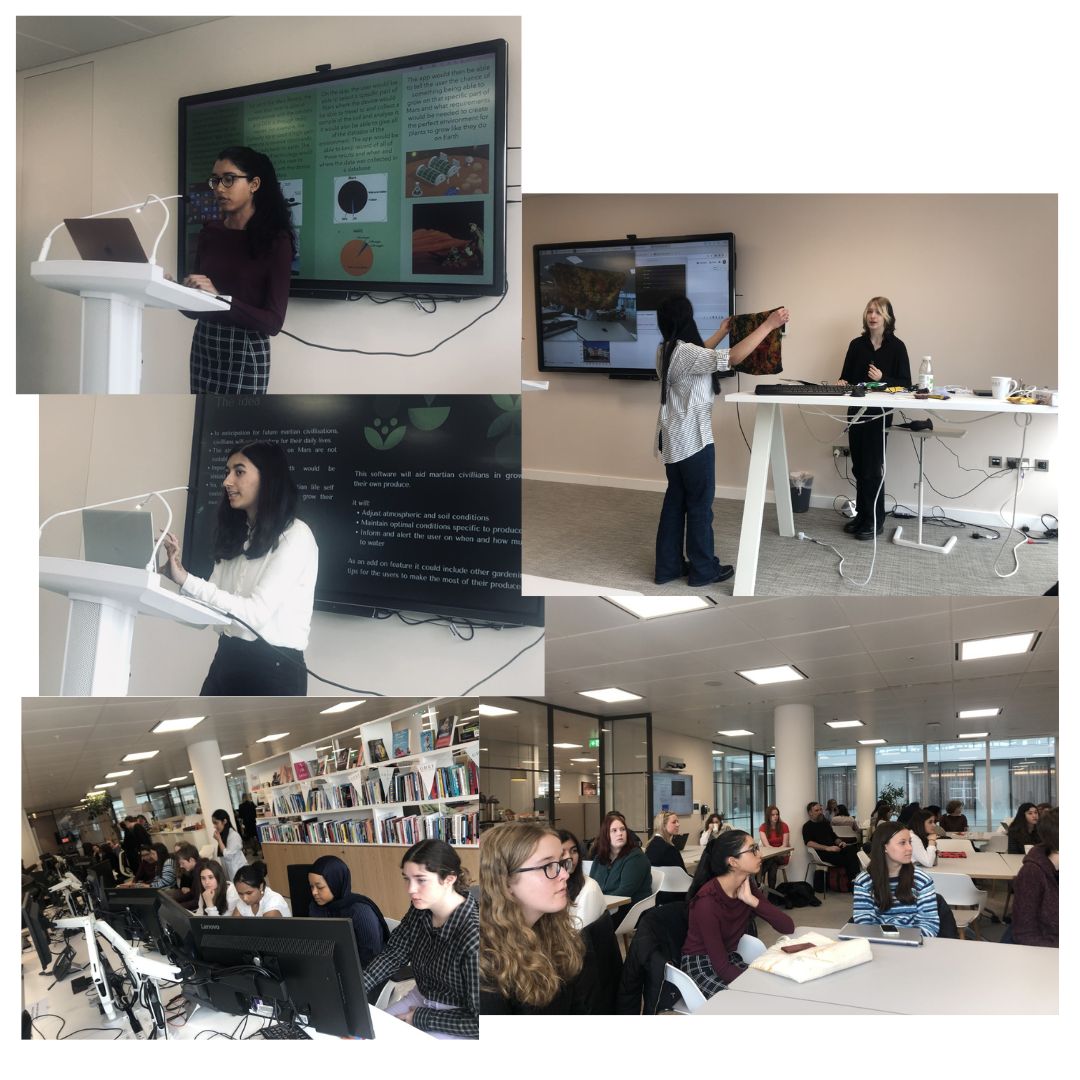Earlier this week, students pursuing this year’s Sutton High hosted GDST Space Technology Diploma were invited to Trust Office in central London to participate in a physical computing workshop day. The day’s activities formed part of their diploma experiential learning in conjunction with weekly remote lectures and tutorials throughout the year. Participating students were offered the hands-on opportunity to realise Raspberry Pi computing applications requiring hardware sensor and camera peripherals, to collect local environmental data for AI processing.
As students from the hosting school, Priya Chaudhuri and Farah Rizwan from Sutton High were the first to demonstrate exemplar distinction level viva voce-style assessments for the cohort. This was a task whereby students opting for the higher level diploma certificate prepare to pitch an idea for an original computer-automated software that addresses, or otherwise creates a solution for aspects covered in additional NASA EPDC Digital Badge learning content studied alongside their yearly diploma coding projects. Further GDST candidate students opting for the distinction level certificate are due present their software pitches at the upcoming GDST Space Technology Diploma student conference taking place in central London this June.
Along with fellow GDST students from Brighton, Nottingham, Streatham and Clapham, Putney, Sheffield, Norwich and Shrewsbury, the students were led by last year’s Sutton High programme experts, Kiyara Wijertane and Sophie Streater, who did the GDST proud as acting student mentors on the day, further reinforcing their coding skills honed during last year’s programme led by Space Technology programme leader Ms Buttigieg.
Supporting diploma candidate pupils from across the Trust during the day’s activities, the two leading students moved from Pi station to Pi station, assisting struggling students with every kind of familiar bug without hesitation. Encountering the chance to meet each visiting GDST student in the process, this example of the teach-to-learn protégé effect method, whereby the student takes on the role of a teacher, was an exceptional example of how having to teach something to their peers offers the prospect to transition a student into a form of expert, whilst also improving their scientific communication skills with related key terms and concepts.


